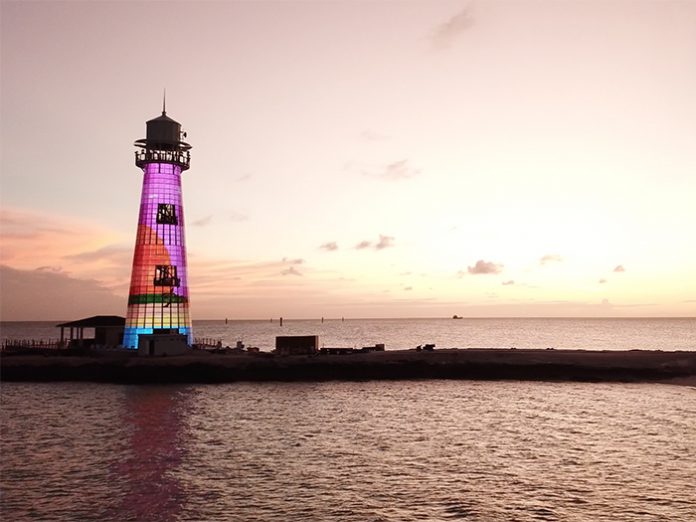Ocean Cay MSC Marine Reserve is a unique, private paradise located in the Bahamas. Immersing guests in its idyllic island beauty, its white sands and transparent turquoise seas serve as a dream-like location to decamp MSC’s Cruise ships and spend the last leg of a life-changing journey. With an expectation of perfection, the multi-million pound fantasy island is one-of-a-kind, encompassing every element of the holiday experience, with live music, restaurants, bars and a landmark video, audio and lighting show from the island’s iconic lighthouse, ensuring guests will never forget their stay.
Before COVID-19 struck, the island was welcoming four cruise ships per week, all of which were carrying around 4,000 guests. Arriving to a warm welcome from a team who have worked furiously to make this project a success, guests can reconnect with their natural surroundings and find peace in the relaxing atmosphere the island projects. The real star of the Ocean Cay show, though, is the island’s Lighthouse, that was a project taken on by immersive design agency, The Department. Hamish Jenkinson, Co-Founder of the company, takes up the story: “I met the technical director of MSC Cruises at an exhibition during London Design Week back in 2018. We spoke about the amazing growth of MSC and some of the ideas that he had to further enhance the cruise lines, and I mentioned how The Department could potentially help execute some of these ideas.
View this post on Instagram
“I went to the company’s offices to give a presentation to the wider team, and through this I found out that the project they were most excited about was the transformation of the island. They wanted to build a multimedia lighthouse and it immediately occurred to me that we could design an LED light that would fit perfectly into the pre-existing design, instead of using projection mapping that could potentially cause problems.”
After confirming the project with MSC, Hamish attended Integrated Systems Europe 2019 to seek out a proficient lighting company that would be able to craft the perfect lighting package for the project. The team needed a mesh screen to cover the lighthouse that also incorporated 14,000 LEDs, and Amsterdam based lighting manufacturer, InventDesign, was confident it could achieve this. “We are very strong in pixel-controlled LED solutions, so it was a perfect match,” explained Robin Sluis, Account Manager at InventDesign. “The main challenge was making a retro fit LED module, because the lighthouse was already designed and built with holes in the façade. Normally we would attach our LED modules on a mounting clip, so we were firstly thinking of using tie-raps or aluminium flat profiles to install all the modules, but aesthetically this was not the solution they were looking for.
“Our product manager then came up with the idea of creating a custom lens with barbs, so we could press the modules through the existing holes. This meant that we needed the exact measurements of the holes. If the lenses were too big, they would not fit, too small and they would fall out. We requested a panel from them to measure it and then we 3D printed the prototype.”
As every module on the lighthouse needed to be independently controlled, Invent Design implemented 14,238 of its DiGi E3S modules that contain three RGB LEDs and an IC Chip, as the IC Chip allowed the team to control the RGB LEDs with an SPI protocol. 36 DiGidot C4 live controllers were also specified, a popular choice as the Art-Net to SPI converter can achieve high frame rates, completing the perfect combination for this project.
Read the full article in issue 31.3 of MONDO-DR –





